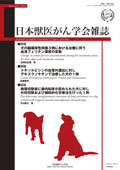Volume 5, Issue 2
Displaying 1-7 of 7 articles from this issue
- |<
- <
- 1
- >
- >|
Note
-
2014Volume 5Issue 2 Pages 18-23
Published: December 26, 2014
Released on J-STAGE: December 26, 2014
Download PDF (175K) -
2014Volume 5Issue 2 Pages 24-28
Published: December 26, 2014
Released on J-STAGE: December 26, 2014
Download PDF (184K) -
2014Volume 5Issue 2 Pages 29-34
Published: December 26, 2014
Released on J-STAGE: December 26, 2014
Download PDF (768K)
information
-
2014Volume 5Issue 2 Pages INFO3-INFO4
Published: December 26, 2014
Released on J-STAGE: December 26, 2014
Download PDF (259K)
Contents
-
2014Volume 5Issue 2 Pages CONT3-CONT4
Published: December 26, 2014
Released on J-STAGE: December 26, 2014
Download PDF (85K)
Cover
-
2014Volume 5Issue 2 Pages HYOU2
Published: December 26, 2014
Released on J-STAGE: December 26, 2014
Download PDF (228K)
Colophon
-
2014Volume 5Issue 2 Pages OKUZ2
Published: December 26, 2014
Released on J-STAGE: December 26, 2014
Download PDF (71K)
- |<
- <
- 1
- >
- >|
